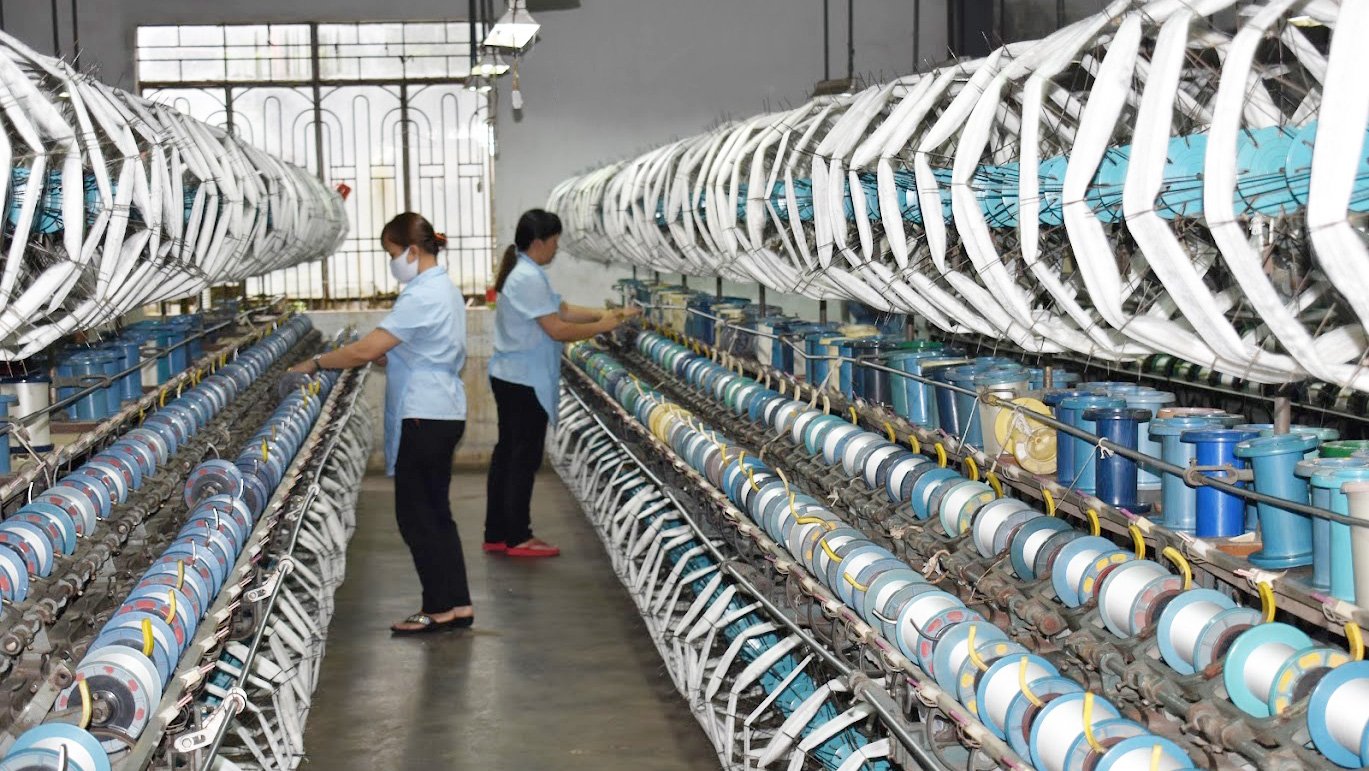 |
| Lam Dong province's silk industry is leading the country with 70% of mulberry area and 80% of annual cocoon output. |
Statistics show that the total mulberry area in Lam Dong province is nearly 10,300 hectares, an increase of nearly 2,900 hectares compared to 2018. Of which, the area of new mulberry varieties is more than 8,200 hectares, applying high technology is more than 2,000 hectares. On average, each year, about 3,000 hectares of ineffective crop areas are converted and newly planted to grow new mulberry varieties, with an average yield of 22 - 23 tons/ha, mainly concentrated in Bao Loc city and the districts of Da Huoai, Bao Lam, Di Linh, Lam Ha, Duc Trong, and Dam Rong. The yield of mulberry leaves of new varieties increases by about 19.5% each year compared to old mulberry varieties. Also compared to 2018, the whole province in 2024 provided 377,220 boxes of bisexual silkworm seeds, an increase of nearly 217,900 boxes, meeting the demand for cocoon production in the area, corresponding to a rate of nearly 57.7%.
Up to now, compared to 2018, Lam Dong's silkworm industry has increased in all three criteria: mulberry area (39%), mulberry leaf output (21%) and silkworm cocoon output (51.5%). Thereby, the whole province has formed and developed 12 production chains associated with the consumption of silk products at the district and provincial levels, attracting about 630 households to participate. In addition, the whole province has 150 silkworm cocoon purchasing facilities, 36 silkworm rearing facilities with a processing capacity of 1 ton of cocoons/facility/day. The silk processing line in the province is invested with modern technology, 100 automatic silkworm rearing rows with 400 connections/row, meeting product quality in the domestic and export markets. The weaving industry produces over 5 million meters of raw silk/year, the silkworm sewing industry produces about 200,000 products/year, annually stabilizing jobs for over 2,000 local workers. In addition, Lam Dong Provincial People's Committee has granted certificates of recognition to 6 craft villages of mulberry growing, silkworm raising, and silk processing: Dong Anh 3, Dong Anh 5 (Nam Ban, Lam Ha); Hamlet 3 (Loc Tan, Bao Lam); Da Kho; Da Pal (Da Huoai); Da Rsal (Dam Rong).
“With the results of applying science and technology in mulberry and silkworm varieties, concentrated silkworm rearing technology, silkworm rearing for cocoons, Lam Dong province's silkworm industry is currently leading the country with 70% of mulberry area, 80% of cocoon output; modern, high-capacity production lines account for 75% of silk reeling capacity, 70% of silk spinning capacity, meeting the demand for silk reeling, high-quality textiles for domestic and export markets…”, Lam Dong Department of Agriculture and Environment said. Accordingly, Lam Dong province's total export turnover of silk, textile fibers, and fabrics of all kinds is about 180 million USD/year, ranking second after the coffee industry. The main export markets are the United States, EU, China, Japan, India, Korea, Thailand, Brunei, and Bangladesh. Typical enterprises purchasing, producing, trading and exporting silk such as: VietSilk Silk Weaving Company Limited, Chau A Production, Trade and Investment Company Limited, Ha Bao Silk Weaving Company Limited, Giang Ngoc Company Limited; Chinese silk production enterprises in Da Huoai, Duc Trong districts, Bao Loc city have contributed to the competition in stable silkworm cocoon purchasing prices, expanding the area of new mulberry varieties, applying science and cultivation techniques, increasing revenue per land area value in 2024 to 350 - 400 million VND, 2 - 3 times higher than the revenue of coffee, tea, pepper, cashew trees, etc.
The current challenge for the Lam Dong silkworm industry is still importing 90% of Chinese double-generation silkworm eggs through unofficial channels without disease control, with high risks in the production process. Therefore, in the coming time, the Department of Agriculture and Environment of Lam Dong needs to strengthen training, scientific research, transfer of technical advances, improve the capacity of silkworm egg production, silkworm breeding for cocoons. At the same time, implement policies to support infrastructure investment to serve the linkage of silkworm egg production, silkworm breeding; upgrade and build new high-tech concentrated silkworm breeding facilities to meet the increasing demand for expanding high-yield mulberry growing areas, silkworm breeding to increase the yield of harvested cocoons in the whole province.
Source: https://baolamdong.vn/kinh-te/202505/khi-cay-dau-tam-tang-ca-3-tieu-chi-a231387/




![[Photo] Ho Chi Minh City holds funeral for former President Tran Duc Luong](https://vphoto.vietnam.vn/thumb/1200x675/vietnam/resource/IMAGE/2025/5/24/9c1858ebd3d04170b6cef2e6bcb2019e)

![[Photo] The Government Standing Committee works with ministries and branches on the real estate market situation.](https://vphoto.vietnam.vn/thumb/1200x675/vietnam/resource/IMAGE/2025/5/24/e9b5bc2313d14c9499b8c9b83226adba)



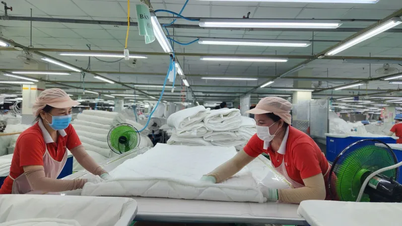
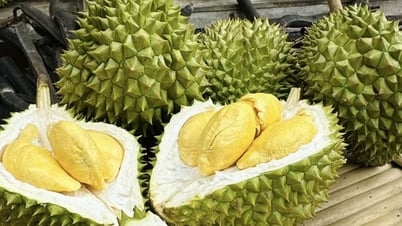

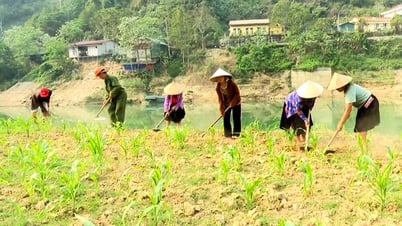









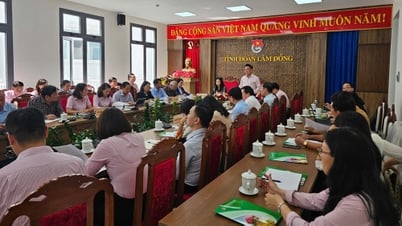




![[Photo] Party and State leaders visit former President Tran Duc Luong](https://vphoto.vietnam.vn/thumb/1200x675/vietnam/resource/IMAGE/2025/5/24/960db9b19102400e8df68d5a6caadcf6)
















































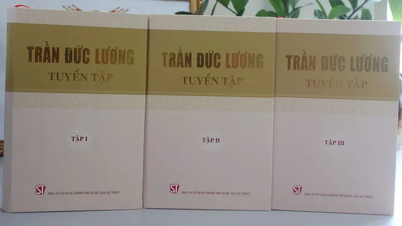












Comment (0)